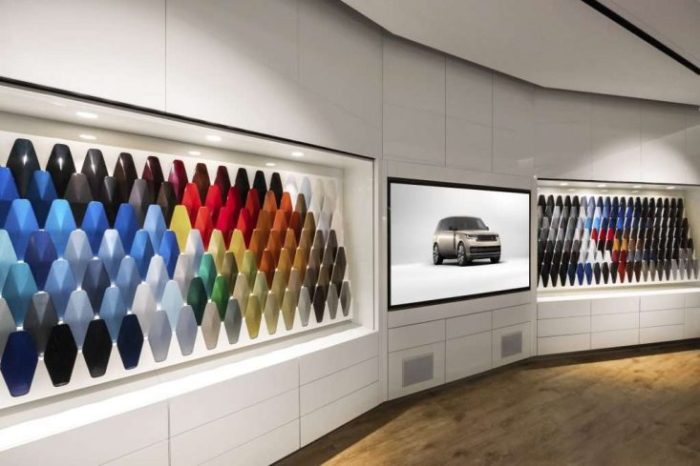Luxury lifestyle and its environmental footprint: The pursuit of opulent living, characterized by lavish travel, exclusive possessions, and extravagant experiences, often comes at a significant cost to the planet. This exploration delves into the environmental consequences of this lifestyle, examining the impact of luxury goods production, high-end tourism, and overall consumption patterns. We’ll uncover the hidden environmental burdens behind seemingly glamorous lifestyles and explore potential pathways towards a more sustainable future.
From the resource-intensive manufacturing of luxury goods like designer clothing and private jets to the carbon emissions generated by luxury travel and the excessive waste produced by lavish consumption, the environmental consequences are substantial. We will analyze the lifecycle of luxury items, from material sourcing to disposal, comparing the environmental impact across different sectors and highlighting both the challenges and opportunities for a more sustainable luxury industry.
Defining Luxury Lifestyle
A luxury lifestyle is characterized by the consumption of high-end goods and services, often associated with exclusivity, prestige, and a heightened sense of self-indulgence. It transcends mere material possessions; it encompasses a holistic approach to living, encompassing travel, experiences, and a curated lifestyle that reflects a certain level of affluence and refined taste. This pursuit isn’t simply about owning expensive items; it’s about the overall feeling of elevated comfort, refined aesthetics, and access to unique opportunities.The characteristics of a luxury lifestyle are multifaceted.
It often involves frequent travel to exclusive destinations, staying in luxury hotels, and utilizing private transportation. Possessions include high-end designer clothing, jewelry, watches, and automobiles, often handcrafted or produced with exceptional materials and meticulous attention to detail. Experiences play a significant role, encompassing fine dining, private events, access to exclusive cultural events, and personalized services designed to cater to individual needs and desires.
Luxury Goods and Services and Their Production Processes
The production of luxury goods and services often involves intricate craftsmanship, rare materials, and meticulous attention to detail. Consider, for example, the creation of a bespoke suit. This process begins with selecting high-quality fabrics, often sourced from specific regions known for their exceptional quality. Skilled tailors then meticulously measure and cut the fabric, ensuring a perfect fit. The construction process involves numerous hand-stitched seams, creating a garment of superior quality and lasting durability.
Similarly, the production of luxury automobiles involves advanced engineering, high-quality materials, and often extensive hand-finishing to ensure a superior driving experience and aesthetic appeal. The creation of a high-end timepiece, such as a Patek Philippe, exemplifies the level of craftsmanship involved, with intricate movements meticulously assembled by highly skilled watchmakers. These production processes are often labor-intensive and contribute to the high cost of these goods.
Socio-Economic Factors Contributing to the Pursuit of a Luxury Lifestyle
Several socio-economic factors contribute to the pursuit of a luxury lifestyle. Firstly, increasing disposable income, particularly among high-net-worth individuals, fuels demand for luxury goods and services. Secondly, globalization and increased access to information through the internet have expanded awareness and desire for luxury brands and experiences worldwide. Thirdly, social status and aspirational values play a significant role.
The acquisition of luxury goods can be seen as a means of signaling social status and success, contributing to the ongoing demand. Furthermore, effective marketing and branding strategies by luxury companies cultivate a sense of exclusivity and desirability, further driving consumption. The influence of social media and celebrity endorsements also plays a significant role in shaping consumer preferences and desires.
The pursuit of a luxury lifestyle is thus influenced by a complex interplay of economic prosperity, global connectivity, social aspirations, and sophisticated marketing.
Environmental Impact of Luxury Goods Production: Luxury Lifestyle And Its Environmental Footprint
The pursuit of luxury often comes at a significant environmental cost. The production of high-end goods, from designer clothing to supercars, demands vast quantities of resources and generates substantial pollution throughout its lifecycle. Understanding this impact is crucial for promoting more sustainable practices within the luxury industry.
Resource Depletion and Pollution in Luxury Goods Manufacturing
Luxury goods manufacturing is inherently resource-intensive. The extraction of raw materials, such as precious metals, rare earth minerals, and exotic woods, often involves destructive mining practices that damage ecosystems and contribute to deforestation. The manufacturing processes themselves can generate significant air and water pollution, releasing harmful chemicals and greenhouse gases into the environment. For example, the tanning of leather for luxury handbags involves the use of chromium, a toxic heavy metal that can contaminate water sources.
Similarly, the production of synthetic fabrics for high-end clothing relies heavily on petroleum-based materials, contributing to carbon emissions and plastic waste.
Comparative Environmental Footprints of Luxury Goods Categories
Different categories of luxury goods have varying environmental footprints. High-end clothing, particularly those made from materials like cashmere or silk, often involves extensive land use for animal husbandry or silk production, along with significant water consumption in processing. Jewelry, especially those containing precious metals and gemstones, carries a heavy environmental burden due to the mining and refining processes.
Luxury automobiles, with their complex manufacturing processes and reliance on fossil fuels, contribute significantly to greenhouse gas emissions and air pollution. Finally, luxury yachts are exceptionally resource-intensive and generate substantial pollution during both manufacturing and operation.
Sustainable Practices in the Luxury Goods Industry
Despite the challenges, some luxury brands are adopting sustainable practices. These include sourcing materials from responsibly managed forests or recycled sources, employing cleaner production methods that minimize pollution, and investing in renewable energy sources. Several brands are also exploring the use of innovative, sustainable materials, such as recycled plastics, plant-based leather alternatives, and lab-grown diamonds. Furthermore, some companies are focusing on extending the lifespan of their products through repair services and encouraging circularity through take-back programs.
Environmental Impact Comparison of Luxury Goods
| Luxury Good | Material Sourcing | Manufacturing Process | Transportation | End-of-Life Disposal |
|---|---|---|---|---|
| Luxury Handbag (Leather) | Cattle ranching (land use, water consumption), chrome tanning (water pollution) | Energy-intensive processes, chemical use | Air and sea freight (high carbon emissions) | Landfill or incineration (potential for pollution) |
| Diamond Ring | Diamond mining (habitat destruction, water pollution), gold mining (mercury pollution) | High energy consumption for cutting and polishing | Air freight (high carbon emissions) | Landfill or potential recycling (depending on metal content) |
| Luxury Watch | Metal mining (resource depletion, pollution), precious stone sourcing | Precise manufacturing, energy intensive | Air freight (high carbon emissions) | Landfill or potential recycling (depending on materials) |
| Luxury Car | Metal mining, plastic production (fossil fuels), rare earth minerals | Energy-intensive assembly, high carbon emissions | Road transport (fuel consumption), shipping (carbon emissions) | Landfill or potential recycling (depending on materials) |
| Cashmere Sweater | Goat farming (land use, water consumption), processing (water pollution) | Energy-intensive dyeing and finishing | Air and sea freight (high carbon emissions) | Landfill or potential recycling (depending on fiber content) |
Luxury Travel and its Ecological Effects
Luxury travel, while offering unparalleled experiences, carries a significant environmental burden. The high consumption of resources and energy associated with private jets, luxury cruises, and exclusive resorts contributes substantially to greenhouse gas emissions and ecosystem degradation. Understanding the scope of this impact is crucial for promoting more sustainable practices within the luxury tourism sector.
The environmental consequences of luxury travel are multifaceted and far-reaching, impacting everything from atmospheric pollution to biodiversity loss. The sheer scale of resource consumption involved in these activities necessitates a critical examination of their sustainability.
Private Jet Travel and its Carbon Footprint
Private jet travel is arguably the most environmentally damaging form of luxury transportation. These aircraft consume vast amounts of fuel, generating significantly higher carbon emissions per passenger compared to commercial flights. For instance, a single transatlantic private jet flight can produce emissions equivalent to several hundred car journeys of the same distance. This contributes directly to climate change and air pollution.
The lack of stringent regulations and monitoring for private aviation exacerbates the problem.
Environmental Consequences of Luxury Cruises
Luxury cruises, while seemingly offering a convenient and all-inclusive vacation, pose significant environmental risks. The sheer size of cruise ships necessitates massive fuel consumption, leading to substantial greenhouse gas emissions. Wastewater discharge from these vessels can pollute coastal ecosystems, harming marine life and coral reefs. Furthermore, the frequent visits of cruise ships to sensitive environments can lead to overcrowding, habitat destruction, and disruption of local ecosystems.
For example, the frequent anchoring of large cruise ships can damage delicate seagrass beds, essential habitats for numerous marine species.
Environmental Impact of Luxury Resort Development
The construction and operation of luxury resorts often involve extensive land clearing, water consumption, and energy usage. These resorts frequently consume vast quantities of resources to maintain their high standards of comfort and luxury, leading to a substantial ecological footprint. The construction of infrastructure, such as roads, utilities, and buildings, can disrupt natural habitats and contribute to soil erosion and biodiversity loss.
The demand for fresh water in arid or semi-arid regions can strain local water resources, impacting local communities and ecosystems. The Maldives, for instance, faces significant challenges due to the high water demand of its luxury resorts.
Luxury Tourism’s Impact on Local Ecosystems and Communities
Luxury tourism can have both positive and negative impacts on local ecosystems and communities. While it can generate revenue and employment opportunities, uncontrolled growth can lead to over-tourism, resource depletion, and cultural commodification. The influx of tourists can strain local infrastructure, increase pollution, and disrupt traditional ways of life. The pressure on fragile ecosystems from increased tourist activity can lead to habitat degradation and biodiversity loss.
Examples include the over-exploitation of coral reefs due to snorkeling and diving tourism or the disruption of wildlife habitats due to increased human presence.
Visual Representation of Carbon Emissions from Luxury Travel, Luxury lifestyle and its environmental footprint
Imagine a bar chart. The x-axis represents different modes of luxury travel: Private Jet, Luxury Cruise (per passenger), First-Class Commercial Flight, and High-Speed Rail. The y-axis represents kilograms of CO2 emitted per passenger-kilometer. The bar for Private Jet would be significantly taller than all others, illustrating its disproportionately high carbon footprint. The Luxury Cruise bar would be considerably high, followed by First-Class Commercial Flight, with High-Speed Rail showing the shortest bar, representing the lowest emissions.
The visual clearly highlights the significant difference in environmental impact between various luxury travel options.
Consumption Patterns and Waste Generation

Source: jamesedition.com
The allure of luxury often translates into a significant environmental cost, largely driven by consumption patterns and subsequent waste generation. The very nature of luxury – often involving high-quality materials, intricate designs, and limited-edition releases – contributes to a higher volume of waste compared to mass-market products. This waste manifests in various forms, from excessive packaging to the eventual disposal of the goods themselves.
Understanding this relationship is crucial for developing sustainable practices within the luxury sector.Luxury consumption generates a disproportionate amount of waste due to several factors. Firstly, the emphasis on exclusivity often leads to overproduction of limited-edition items, resulting in unsold stock that ends up discarded. Secondly, luxurious packaging, frequently employing lavish materials like elaborate boxes, ribbons, and inserts, adds considerably to waste volume.
Thirdly, the inherent durability of many luxury goods, while a selling point, can paradoxically lead to longer periods of use before disposal, but ultimately contributes to a larger waste stream once these items are eventually discarded. Finally, the often complex composition of luxury goods – including various materials, coatings, and finishes – can make recycling difficult and costly.
Waste Reduction Initiatives in the Luxury Sector
Several luxury brands are actively pursuing initiatives to reduce their environmental impact. Some companies are focusing on using recycled and sustainable materials in their products, such as recycled metals, sustainably sourced leather, or organic cotton. Others are implementing more eco-friendly packaging designs, opting for minimal packaging, recyclable materials, or compostable alternatives. Examples include brands shifting from elaborate gift boxes to simpler, recyclable alternatives, or using recycled materials in the creation of their products.
Furthermore, some brands are investing in take-back programs, allowing consumers to return used products for recycling or reuse, extending the product lifecycle and reducing landfill waste. These programs demonstrate a commitment to circular economy principles, aiming to minimize waste and maximize resource utilization.
The Role of Consumer Behavior in Mitigating Environmental Impact
Consumer behavior plays a pivotal role in shaping the environmental footprint of luxury consumption. Conscious consumers can make significant contributions by prioritizing brands with strong sustainability commitments, opting for durable and timeless pieces over fleeting trends, and embracing responsible disposal methods such as recycling or donating unwanted items. Choosing brands that utilize sustainable materials and ethical manufacturing practices is another key aspect of responsible consumption.
Moreover, consumers can advocate for greater transparency and accountability from luxury brands, encouraging them to disclose their environmental impact and implement more sustainable practices. By demanding sustainable options and supporting brands with robust environmental policies, consumers can exert considerable influence on the industry’s trajectory.
Strategies for Reducing Waste Associated with Luxury Goods Consumption
Reducing waste associated with luxury goods requires a multi-pronged approach encompassing both producers and consumers. The following strategies can contribute to a more sustainable luxury consumption pattern:
- Choose durable, timeless pieces: Invest in high-quality items designed to last, reducing the need for frequent replacements.
- Support brands with strong sustainability commitments: Prioritize companies that utilize sustainable materials, ethical manufacturing practices, and transparent supply chains.
- Minimize packaging waste: Opt for brands with minimal packaging or recyclable alternatives. Avoid excessive wrapping when gifting.
- Recycle or donate unwanted items: Explore recycling options for luxury goods or donate them to charity rather than discarding them in landfills.
- Repair and restore: Extend the lifespan of luxury items by repairing or restoring them instead of replacing them.
- Advocate for change: Encourage luxury brands to adopt more sustainable practices through feedback, social media engagement, and responsible purchasing decisions.
Sustainable Luxury
The pursuit of luxury doesn’t have to come at the expense of the planet. A growing movement within the luxury industry is recognizing the urgent need to minimize its environmental footprint, embracing sustainable practices and innovative solutions to create a more responsible and ethical approach to luxury goods production and consumption. This involves a fundamental shift in materials, manufacturing processes, and business models.Sustainable luxury isn’t just a trend; it’s a necessity driven by consumer demand and environmental awareness.
Consumers are increasingly discerning, seeking out brands that align with their values and demonstrate a commitment to sustainability. This shift presents both challenges and opportunities for the luxury industry, requiring a reimagining of traditional practices and the adoption of innovative solutions.
Innovative Materials and Manufacturing Processes
The environmental impact of luxury goods is significantly influenced by the materials used and the manufacturing processes employed. Many traditional luxury materials, such as exotic leathers and certain precious metals, carry substantial environmental costs associated with their extraction, processing, and transportation. Sustainable alternatives are emerging, focusing on recycled materials, bio-based materials, and innovative manufacturing techniques that minimize waste and energy consumption.
For instance, recycled cashmere, mushroom leather (a vegan alternative made from mycelium), and lab-grown diamonds are gaining popularity as eco-conscious substitutes for traditional materials. Furthermore, advancements in 3D printing and other additive manufacturing processes offer the potential for significant reductions in material waste and energy consumption during production. These technologies allow for highly precise and efficient manufacturing, minimizing material waste and reducing the overall environmental footprint.
Examples of Sustainable Luxury Brands
Several luxury brands are leading the charge in sustainable luxury, integrating environmentally responsible practices into their operations. Stella McCartney, for example, has long been a champion of sustainable fashion, utilizing organic cotton, recycled materials, and innovative, cruelty-free alternatives to leather. Patagonia, while not strictly a luxury brand, serves as a strong example of a company prioritizing environmental responsibility and fair labor practices across its supply chain.
Their commitment to repairing and recycling their products extends their lifespan and reduces waste. Similarly, some high-end jewelry brands are increasingly sourcing recycled precious metals and ethically sourced gemstones, providing consumers with luxurious items with a reduced environmental impact.
Challenges and Opportunities in Creating a Truly Sustainable Luxury Industry
The transition to a truly sustainable luxury industry presents significant challenges. Balancing the high quality and craftsmanship expected of luxury goods with sustainable practices can be difficult and costly. Supply chain transparency and traceability are crucial for ensuring the sustainability of materials and manufacturing processes, yet achieving this level of transparency can be complex and challenging, especially with global supply chains.
Consumer education is also essential. Many consumers are not fully aware of the environmental impact of their purchases, and effective communication about sustainable practices is necessary to drive demand for eco-conscious luxury products. Despite these challenges, the opportunities are considerable. The growing demand for sustainable luxury presents a significant market opportunity for brands that can successfully integrate sustainability into their business models.
Innovation in materials and manufacturing processes, combined with transparent and ethical supply chains, can create a new era of luxury that is both luxurious and responsible.
Case Study: Comparing Sustainability Efforts of Two Prominent Luxury Brands
Let’s compare the sustainability initiatives of Kering and LVMH, two of the world’s largest luxury conglomerates. Kering, the parent company of Gucci, Balenciaga, and Yves Saint Laurent, has made significant commitments to sustainability, setting ambitious targets for reducing its environmental impact across its supply chain. They’ve invested in initiatives focused on reducing greenhouse gas emissions, promoting biodiversity, and improving water management.
LVMH, which owns brands like Dior, Louis Vuitton, and Givenchy, has also implemented various sustainability programs, focusing on responsible sourcing of materials, reducing waste, and promoting ethical labor practices. While both companies have made strides in sustainability, a direct comparison reveals differences in their approach and transparency regarding specific targets and progress. For instance, Kering’s public reporting on environmental data is generally considered more comprehensive and transparent than LVMH’s, allowing for a more detailed assessment of their progress towards sustainability goals.
However, both companies are actively working towards greater sustainability, demonstrating the industry’s evolving commitment to environmental responsibility.
The Future of Luxury and Environmental Responsibility

Source: impactwealth.org
The luxury industry faces a critical juncture. Continued growth, as it has been historically pursued, is unsustainable given the environmental pressures it exerts. However, the future of luxury needn’t be a choice between opulence and ecological destruction. Technological innovation, responsible policy, and evolving consumer preferences offer pathways towards a more sustainable model. This section explores how these factors can reshape the industry’s environmental impact.Technological Advancements in Reducing Luxury’s Environmental FootprintTechnological advancements hold significant potential for mitigating the environmental impact of luxury consumption.
For instance, innovations in materials science are leading to the development of sustainable alternatives to traditional luxury materials. Lab-grown diamonds, for example, eliminate the environmental and ethical concerns associated with diamond mining. Similarly, advancements in 3D printing allow for the creation of highly customized products with minimal material waste, reducing the overall environmental footprint of production. Furthermore, improvements in manufacturing processes, such as the adoption of circular economy principles (reuse, recycle, reduce), can significantly decrease waste and energy consumption.
The development of more efficient transportation methods, including electric and hydrogen-powered vehicles, also plays a vital role in reducing the carbon emissions associated with the transportation of luxury goods and travel.
Policy Interventions Promoting Sustainable Luxury Practices
Governments and regulatory bodies can play a crucial role in fostering sustainable practices within the luxury sector. Carbon taxes, for instance, could incentivize companies to reduce their carbon emissions. Stricter regulations on the sourcing of materials, ensuring compliance with environmental and social standards, can prevent the use of unsustainable materials and unethical labor practices. Furthermore, the implementation of extended producer responsibility schemes can hold luxury brands accountable for the entire lifecycle of their products, encouraging them to design for durability, recyclability, and repairability.
Subsidies for research and development of sustainable technologies within the luxury industry can accelerate the adoption of environmentally friendly practices. Examples include tax breaks for companies investing in renewable energy sources or developing innovative sustainable materials. These policies would not only encourage environmental responsibility but also foster innovation and competitiveness within the sector.
The Role of Consumer Awareness and Education
Ultimately, the future of sustainable luxury hinges on consumer awareness and education. Consumers need to be informed about the environmental impact of their purchasing decisions and empowered to make responsible choices. Transparency in supply chains, clear labeling of materials and production processes, and accessible information on the environmental credentials of luxury goods are crucial. Educational campaigns can raise awareness about the environmental consequences of unsustainable consumption patterns and promote the benefits of supporting sustainable luxury brands.
By prioritizing ethical and environmentally responsible brands, consumers can drive market demand for sustainable luxury goods, incentivizing the industry to adopt more sustainable practices. This shift in consumer preference can become a powerful force for change, encouraging the luxury sector to embrace sustainability not just as a cost, but as a source of competitive advantage and brand loyalty.
Outcome Summary

Source: co.uk
Ultimately, the future of luxury hinges on a fundamental shift in consumer behavior and industry practices. While achieving truly sustainable luxury presents significant challenges, innovative materials, responsible manufacturing processes, and conscious consumption choices offer promising pathways forward. By embracing transparency, accountability, and a commitment to environmental responsibility, the luxury industry can redefine opulence without compromising the planet’s well-being. The path to a sustainable future requires collaborative efforts from brands, consumers, and policymakers alike.
FAQs
What are some examples of sustainable luxury brands?
Several brands are actively incorporating sustainable practices, such as using recycled materials, minimizing waste, and implementing ethical sourcing. Examples include Stella McCartney (fashion), Patagonia (outdoor apparel), and Allbirds (footwear), though it’s important to critically assess each brand’s claims.
Can I still enjoy a luxurious lifestyle without harming the environment?
Yes, but it requires conscious choices. Prioritize experiences over material possessions, choose brands with strong sustainability commitments, opt for eco-friendly travel options when possible, and reduce waste through mindful consumption and responsible disposal.
What role do governments play in promoting sustainable luxury?
Governments can implement policies that incentivize sustainable practices, such as carbon taxes on high-emission luxury goods, regulations on resource extraction, and support for research and development of eco-friendly materials and technologies.
How can I reduce my personal environmental footprint related to luxury consumption?
Consider buying less, choosing durable, high-quality items, repairing instead of replacing, opting for secondhand luxury goods, and supporting brands with transparent and sustainable practices. Reduce your travel footprint by choosing less environmentally damaging transportation options.





